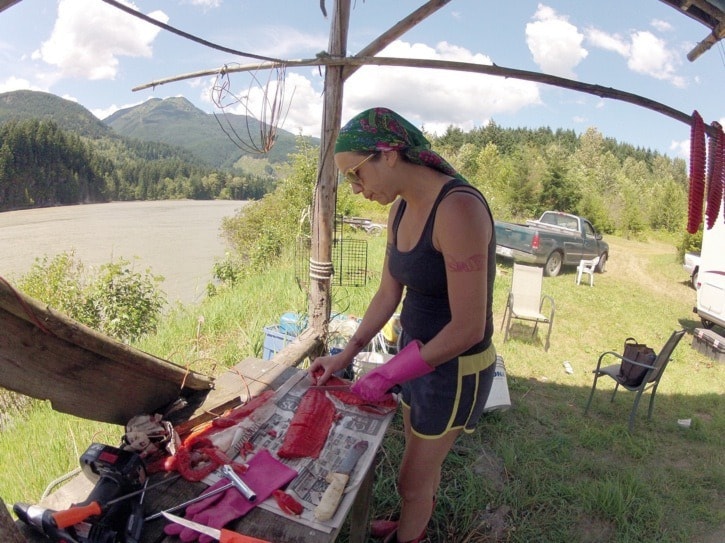The hot, dry winds of the Fraser Canyon are perfect for air drying sockeye salmon.
Dry rack fishers and their families from several Sto:lo communities including Tzeachten, Skwah, Squiala and more were engaged in the ancient tradition last week.
That is until federal fisheries shut them down after only a few days of fishing.
A communal fishing licence for dry rack fishing was issued July 10 by DFO to Lower Fraser bands. The sockeye were to be caught either in set nets or dip nets, for food, social, and ceremonial purposes.
The dry rack licence allowed certain designated fishers, and their helpers, to harvest fish from the Fraser, processing and drying them on racks from fish camps above the river.
The fishery was a little earlier than usual, but given the ideal weather earlier this month, it should have even started the week before, said Ernie Victor, fisheries manager for Sto:lo Nation, and co-chair of the Lower Fraser Fisheries Alliance.
"The dry rack fishers, the families who carry on this tradition, are unique," said Victor. "It's the way they dry the fish. What they've been holding onto is our culture."
The fishing licence was supposed to be in effect for a week, until July 17. But the special fishery was actually shut down earlier than expected, after only a few days, because the sockeye run size was downgraded by the Fraser River Panel on July 12.
The early Stuart run is quite threatened.
"It's always a guessing game," said Victor, about the run size estimates that dictate fishery openings.
The thing is that the best time for dry rack fishing is early on in the run, when the first fish tend to be smaller and thinner than later, and the bees are still hibernating, said Victor.
It's less than ideal on the peak of the run, or in other words, during the times when the "bees will eat your fish."
The whole dry rack process should be a little easier and more smooth going than it actually is, he said.
"From an indigenous person's standpoint, when you have something that's so sacred, like traditional dry rack fishing, you think it just shouldn't be so hard."
The process is "way more bureaucratic" than it needs to be, with scientific testing and modelling dictating the fishery openings that are allowed.
"Of course if you have a million dollar venture like the commercial fleet when they get an opening, it all runs smoothly. It's green light, go."
Even as some Sto:lo fishers were preparing their fish camps early last week, some said they spotted undercover DFO enforcement officers with binoculars watching their movements, as well as some posing as fisher buyers, presumably in an effort to get the fishers to sell them sockeye, which is illegal.
"We're talking about a group of families trying to keep their culture alive. They don't need any additional barriers or obstacles."
First Nations are not against conservation in any way, he added, or the effort to build strong runs with fishery management decisions.
"But we have the Yale treaty, and we have the slow decision making process," he said. "We're not listening to, or given the ability to follow, Mother Nature the way we should."
jfeinberg@theprogress.com
Twitter.com/chwkjourno
